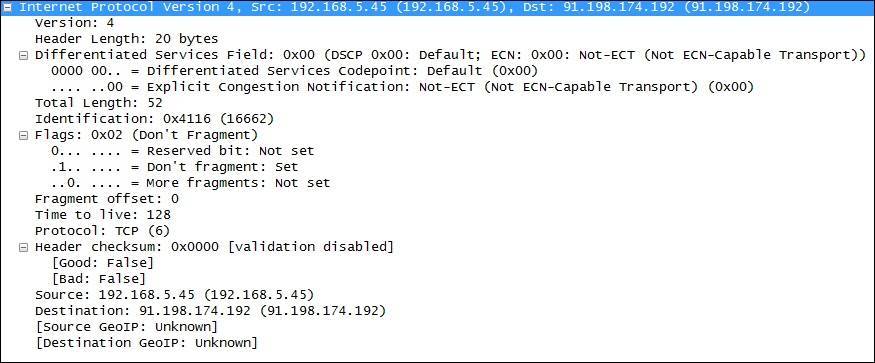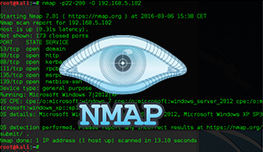IPv4 header
An IPv4 header is a prefix to an IP packet that contains information about the IP version, length of the packet, source and destination IP addresses, etc. It consists of the following fields:
Here is a description of each field:
Version – the version of the IP protocol. For IPv4, this field has a value of 4.
Header length – the length of the header in 32-bit words. The minumum value is 20 bytes, and the maximum value is 60 bytes.
Priority and Type of Service – specifies how the datagram should be handled. The first 3 bits are the priority bits.
Total length – the length of the entire packet (header + data). The minimum length is 20 bytes, and the maximum is 65,535 bytes.
Identification – used to differentiate fragmented packets from different datagrams.
Flags – used to control or identify fragments.
Fragmented offset – used for fragmentation and reassembly if the packet is too large to put in a frame.
Time to live – limits a datagram’s lifetime. If the packet doesn’t get to its destination before the TTL expires, it is discarded.
Protocol – defines the protocol used in the data portion of the IP datagram. For example, TCP is represented by the number 6 and UDP by 17.
Header checksum – used for error-checking of the header. If a packet arrives at a router and the router calculates a different checksum than the one specified in this field, the packet will be discarded.
Source IP address – the IP address of the host that sent the packet.
Destination IP address – the IP address of the host that should receive the packet.
Options – used for network testing, debugging, security, and more. This field is usually empty.
Consider the following IP header, captured with Wireshark:
Notice the fields in the header: the IP version is IPv4, the header length is 20 bytes, the upper-level protocol used is TCP, the TTL value is set tu 128, etc.





